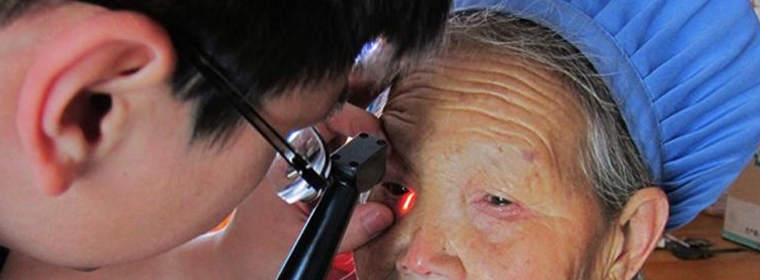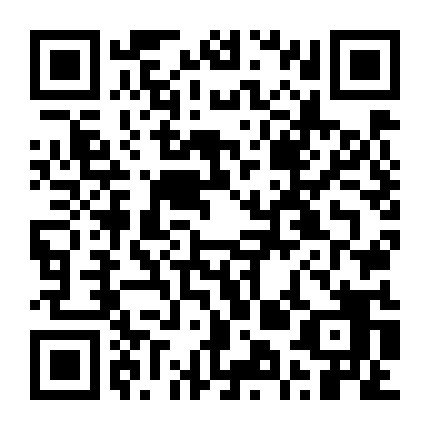The clouds in your eyes, CBi China Bridge supports the mission to reduce needless blindness in rural China
news
12.07.23

In May, CBi China Bridge was invited to conduct an ethnographic research in rural area of Shandong, to help evaluate and improve an outreach-based “screen-to-surgery” service a local ophthalmology hospital initiated with the help of Vision in Practice, a non-for-profit organization whose goal is to eliminate needless blindness in China, starting with cataract. Two researchers from China Bridge shadowed the screening team for 8 days, fully exposed with the local lifestyle, and got in close contact with the team and the local villagers.
Jeffrey Parker, one of the founders of Vision in Practice and our local ophthalmology hospital’s business partner, reached out to China Bridge, hoping that our ethnographic-based design research methods could help them 1) uncover the motives and reasons underlying patients’ process of deciding whether to go or not to go to surgery, and 2) evaluate the current process, reveal areas for improvement, and finally improve the process to increase the screen-to-surgery “conversion rate”—the percentage of identified surgical candidates who become surgical patients.
It was a very sunny day. While the spring chill had just passed, the air in Shandong was already getting warm. There was no cloud in the sky. We sat in a van painted with the prominent words “eye disease screening”, tumbling on the country road. The van’s PA system played in loops a pre-recorded broadcast with a heavy Shandong accent: “If you have cataract, or pterygium, which means you have “clouds in your eyes” (local expression), bring your phone number to the community office for free check up and free cataract treatment.” The sound of the PA attracted a few stares and on-lookers on the road, but we kept on driving non-stop to our destination: our first screening camp today, located in a remote village.
Most of the patients who came to our camps were between 50-90 years old, with the more elderly patients more likely to have eye diseases. In these screening camps, we felt deeply that the quality of living for the elderly in a village can be unbelievably low, even in places like Shandong. These old people usually have no one else to depend on, since their children often leave their hometown for prospect of a better future and higher salary in bigger cities. Therefore in most cases, the only regular source of income for these elderly is a 55 RMB monthly allowance the government issues to retired farmers.
From our observation, when diagnosed with cataract or other eye diseases that cause blindness, some elderly think they are too old, and therefore there is no point in doing surgery—especially if they must pay for it. Some do not want to go through surgery because they regarded it as “suffering,” since they do not possess the knowledge that it actually is a simple procedure done in 20 minutes or less. Some other elderly cannot promptly attend surgery because it is farming season and their livelihood depends on these few months of the year. Yet the rest of the elderly—the majority of patients—expressed the conviction that they want to be able to see clearly again, especially those who have acute eye conditions. For safety reasons, the hospital requires that family be present during and after surgery. Most of the elderly trudged to the screening camps with a cane, telling us with their heavy accented Mandarin that they have no one to take them to the surgery. One old lady thought we worked for the hospital and wouldn't stop asking:”Can I just go to the surgery by myself?”
When we were finishing up in our first screening camp that day, an old man with cataract walked into the camp with his grandson. The old man had cataract surgery with his one eye in our local ophthalmology hospital around 4 years ago, and he wanted to have a check-up when he found that he could no longer see with his other eye. Because the old man had lost most of his teeth, he could not speak very clearly. His grandson stepped in to help explain that he brought his grandpa to the camp because he overheard the village PA system broadcasting our free cataract screening, “My grandpa could see immediately after his last surgery. It was amazing and we felt so much joy! I’m planning to take him to the surgery this Saturday.”
Watching these elderly people having strong family ties and the majority that don’t have care givers to bring them to the hospital, we were surprised at the effect urbanization has on the grand scale across the country, causing this “empty nest” phenomenon in rural areas, and on the scale as small as these elderly people’s ability to attend a simple surgery.
Precisely for these villagers—especially for the elderly who have great difficulty walking to the hospital, and no ability to pay for their treatments—Our local ophthalmology hospital initiated the free cataract outreach surgery program, offering free screening that brings the hospital to the villagers, and free shuttle service for the patients to and back from surgery. The private hospital, established only 6 years ago, started this program last year in July under great financial pressure, with help from Hongkong Huaqiao Foundation, and Shanghai Vision in Practice. The hospital goes to the local villages Monday through Friday with two screening teams screening four villages per day. Wednesday and Saturday are surgery days. Patients who are diagnosed with cataract or pterygium will be picked up by the screening van and delivered to the hospital, while Dr. Hao Xiaojun clinical director of Vision in Practice, and Dr. Tian Zuolong, the founder of the ophthalmology Hospital, perform the surgeries. The program has been up and running for almost a year, and the hospital has almost finished screening the 800+ surrounding villages and is starting the second round of screening. The screening team members proudly told us:”Once the villagers see our van, they know we are doing screening again.”
Although the hospital offers free screening and cataract surgery, with artificial intraocular lenses used to replace the clouded human lens ranging from free domestic lenses to low-priced imported lenses for patients to choose from, not all patients who attend screening present themselves for surgery for various reasons. The hospital’s current business model for the outreach surgery program is to acquire a limited fee from patients who have the ability to pay for imported lenses, and use these revenues to cover most costs generated from hospital daily operations and screening activities. This gives most villagers, especially elder people with poor financial status, a chance for treatment at no cost to themselves. The key success factor to this model is to achieve efficiency of scale—acquiring a sufficient quantity of patients who will go to surgery. The more patients that come to surgery, the more likely the hospital will have paying patients whose payments can cover the costs of all surgeries. Currently the hospital’s biggest challenge is continue profitability from this model. And the low surgery patient volume no doubt affects the hospital’s ability to help these vulnerable groups in a sustainable way.
In our 8 days experience, we saw too many elder people suffer from the “empty nest” phenomenon. This is a social problem that requires the whole society to reflect and think about ways to take action. Currently we cannot change this situation, but we can help to improve the service so that more elderly can benefit from this humanitarian screen-to-surgery system. In whatever ways we can, we will help move away “the clouds” in their eyes, and let them feel the warmth of humanity.
Connect with us to learn more
We look forward to hearing from you.

